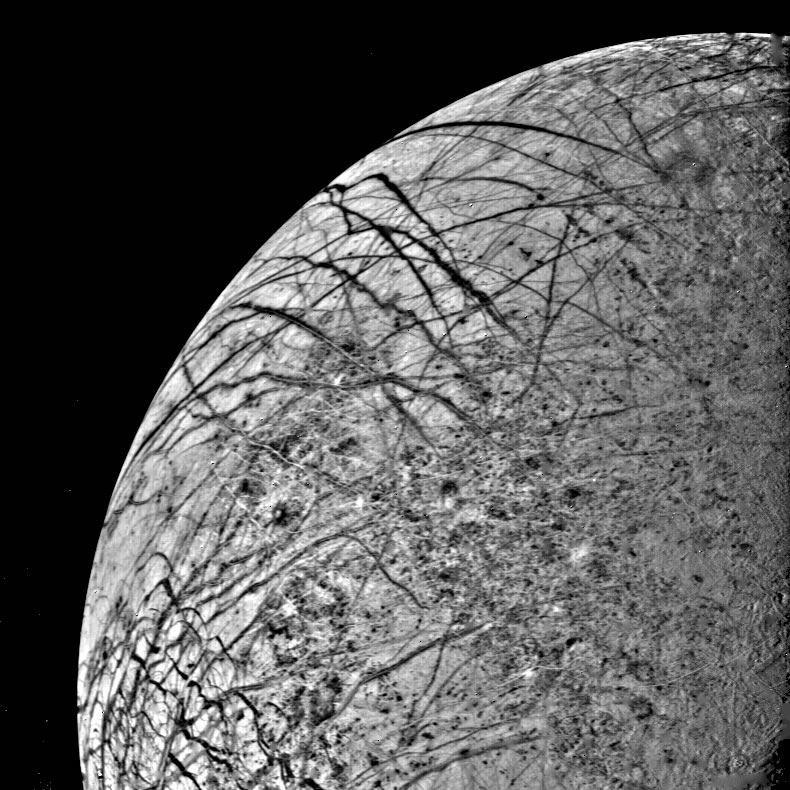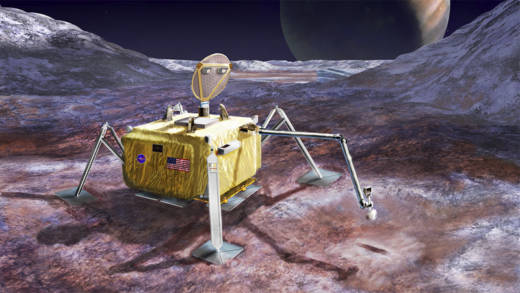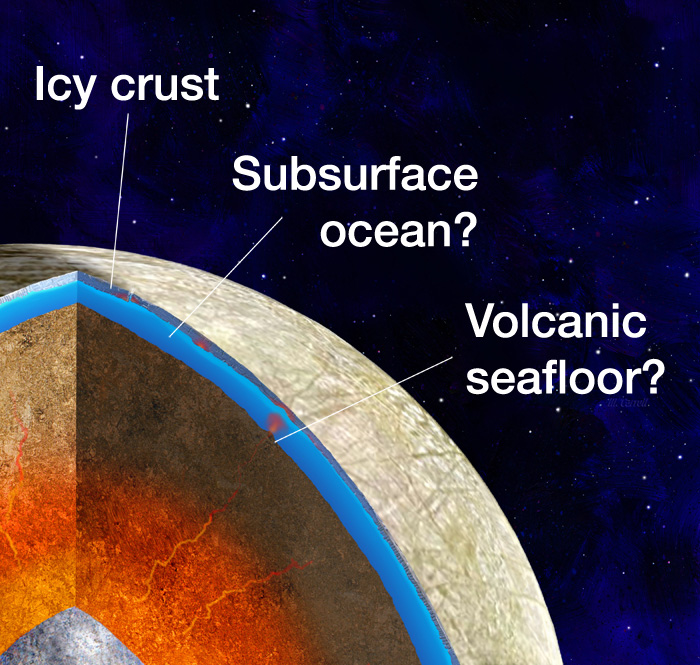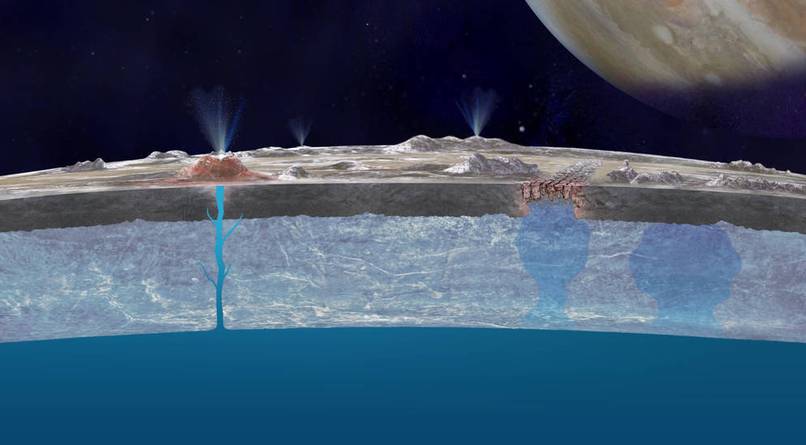We may be one small step closer to “first contact” with extraterrestrial life. On February 7, scientists delivered a report ordered by NASA detailing the feasibility and potential scientific value of sending a robotic lander to Jupiter’s ocean-bearing moon, Europa, to search for signs of life.
This would be only the third solar system moon on which we have landed, following earlier missions to Earth’s own moon and to Saturn’s liquid-hydrocarbon bearing satellite, Titan. Unlike those two, however, Europa may harbor an environment friendly to life as we know it on Earth.
If approved by NASA, it would be the first life-detection mission since the Viking landers looked for evidence of microbial life in Mars’ soils back in the late 1970s. Other mission goals include analyzing the composition of surface materials to assess the habitability of Europa and to probe the structure of the frozen crust, information that would inform future missions exploring the moon’s ocean.
Ever since photos taken by Voyager 2 in 1979 suggested the presence of a deep ocean of liquid water beneath Europa’s cracked icy surface, Jupiter’s moon has become the most tantalizing body in the solar system in the search for extraterrestrial life.

Europa’s ocean has made its presence known not only by cracks in the icy crust. In 2014, the Hubble Space Telescope first detected water vapor plumes erupting from below Europa’s surface that are believed to be supplied by that ocean. Also, in the early 2000’s the Galileo spacecraft measured disturbances in Jupiter’s magnetic field caused by Europa, and the nature of those disturbances suggest that its ocean waters are likely salty.



